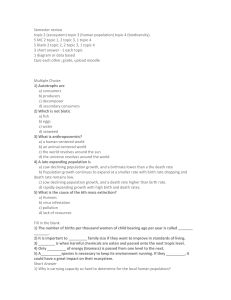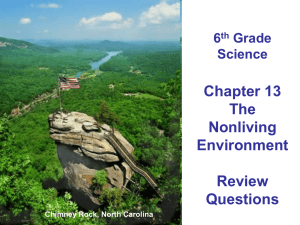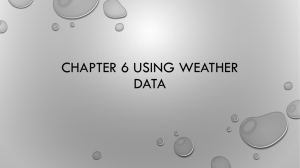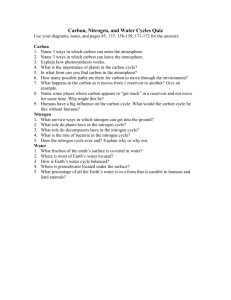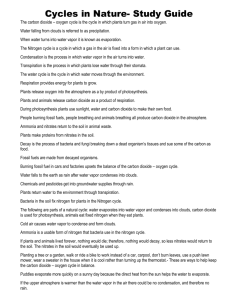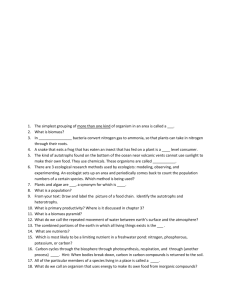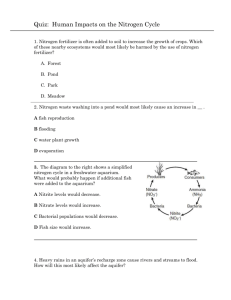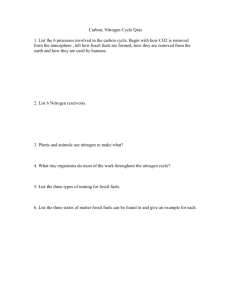Ch22Sec2 - Stephanie Dietterle Webpage
advertisement
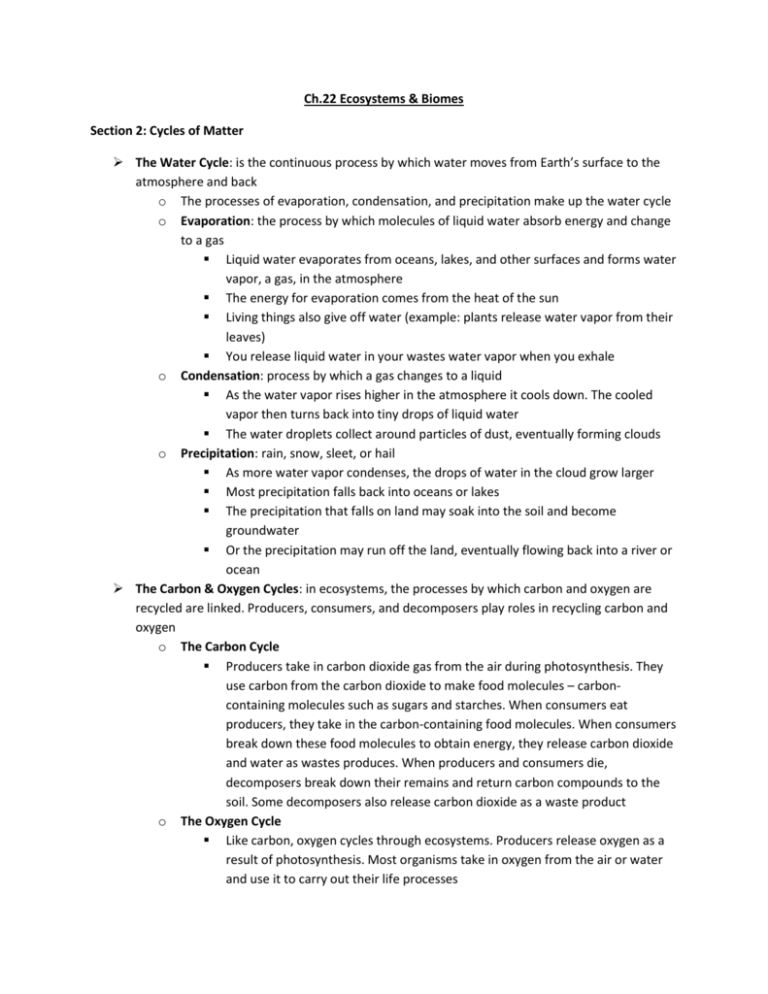
Ch.22 Ecosystems & Biomes Section 2: Cycles of Matter The Water Cycle: is the continuous process by which water moves from Earth’s surface to the atmosphere and back o The processes of evaporation, condensation, and precipitation make up the water cycle o Evaporation: the process by which molecules of liquid water absorb energy and change to a gas Liquid water evaporates from oceans, lakes, and other surfaces and forms water vapor, a gas, in the atmosphere The energy for evaporation comes from the heat of the sun Living things also give off water (example: plants release water vapor from their leaves) You release liquid water in your wastes water vapor when you exhale o Condensation: process by which a gas changes to a liquid As the water vapor rises higher in the atmosphere it cools down. The cooled vapor then turns back into tiny drops of liquid water The water droplets collect around particles of dust, eventually forming clouds o Precipitation: rain, snow, sleet, or hail As more water vapor condenses, the drops of water in the cloud grow larger Most precipitation falls back into oceans or lakes The precipitation that falls on land may soak into the soil and become groundwater Or the precipitation may run off the land, eventually flowing back into a river or ocean The Carbon & Oxygen Cycles: in ecosystems, the processes by which carbon and oxygen are recycled are linked. Producers, consumers, and decomposers play roles in recycling carbon and oxygen o The Carbon Cycle Producers take in carbon dioxide gas from the air during photosynthesis. They use carbon from the carbon dioxide to make food molecules – carboncontaining molecules such as sugars and starches. When consumers eat producers, they take in the carbon-containing food molecules. When consumers break down these food molecules to obtain energy, they release carbon dioxide and water as wastes produces. When producers and consumers die, decomposers break down their remains and return carbon compounds to the soil. Some decomposers also release carbon dioxide as a waste product o The Oxygen Cycle Like carbon, oxygen cycles through ecosystems. Producers release oxygen as a result of photosynthesis. Most organisms take in oxygen from the air or water and use it to carry out their life processes o Human Impact When humans burn oil and other fuels, carbon dioxide is released into the atmosphere. When humans clear forests for lumber, fuel, and farmland, carbon dioxide levels also rise. When trees are removed from the ecosystem, there are fewer producers to absorb carbon dioxide. There is a greater effect if trees are burned down to clear a forest. If trees are burned down to clear a forest, additional carbon dioxide is released in the burning process The Nitrogen Cycle: in the nitrogen cycle, nitrogen moves from the air to the soil, into living things, and back into the air o Since the air around you is about 78% nitrogen gas, you might think that it would be easy for living things to obtain nitrogen. However, most organisms cannot use nitrogen gas. Nitrogen gas is called “free” nitrogen because it is not combined with other kinds of atoms o Nitrogen Fixation: the process of changing free nitrogen into a usable form of nitrogen Most organisms can use nitrogen only once it has been “fixed” or combined with other elements to form nitrogen-containing compounds Most nitrogen fixation is performed by certain kinds of bacteria. Some of these bacteria live in bumps called nodules on the roots of certain plants Example: legumes, including: clover, beans, peas, alfalfa, and peanuts o Return of Nitrogen to the Environment Once nitrogen has been fixed, producers can use it to build proteins and other complex compounds. Decomposers, in turn, break down these complex compounds in animal wastes and the bodies of dead organisms. Decomposition returns simple nitrogen compounds to the soil. Nitrogen can cycle from the soil to producers and then to consumers many times. At some point, however, bacteria break down the nitrogen compounds completely. These bacteria then release free nitrogen back into the air. The cycle continues from there.
